Guinea pigs, also known as cavies, are delightful and sociable pets that require proper care and nutrition to thrive. One of the key aspects of caring for guinea pigs is providing them with an appropriate diet. Understanding how much guinea pig food to give is crucial for maintaining their health, preventing obesity, and ensuring they receive the necessary nutrients. In this comprehensive guide, we will explore the factors that influence guinea pig food requirements, how to determine the right portion sizes, and the importance of a balanced diet for these beloved small animals.
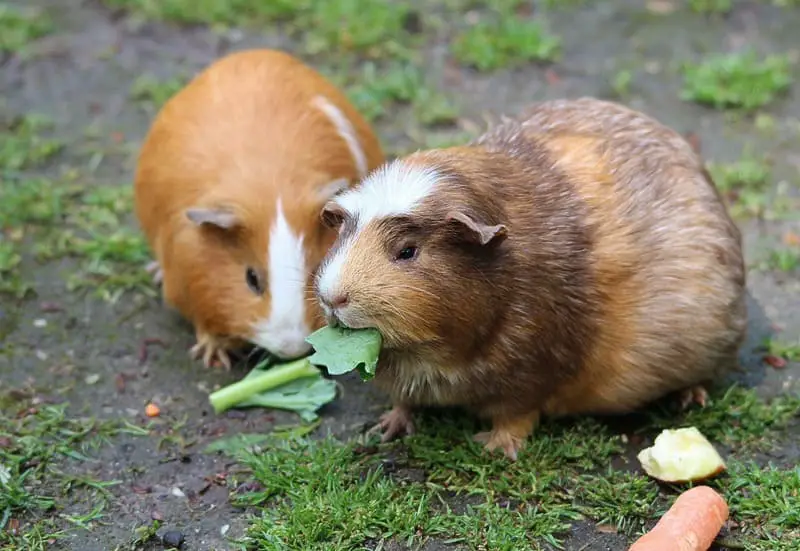
The Role of Proper Nutrition
Guinea pigs, like all pets, rely on a balanced and nutritious diet to support their well-being. Providing the right amount of food is just as essential as offering a variety of high-quality foods. Guinea pigs have specific dietary needs, and meeting these requirements is crucial for their health and longevity. Proper nutrition can help prevent a range of health issues, from dental problems to obesity.
Factors That Influence Guinea Pig Food Requirements
The amount of food a guinea pig needs can vary based on several factors. To determine the right portion sizes for your pet, consider the following:
1. Age
The age of your guinea pig plays a significant role in their food requirements. Young guinea pigs, also known as pups, have different nutritional needs than adults. Pups are still growing and require more calories, protein, and calcium to support their development. As they mature, their dietary needs change, and portion sizes should be adjusted accordingly.
2. Weight
The weight of your guinea pig can influence their food requirements. Overweight guinea pigs may need to have their portions reduced to help them achieve a healthy weight. On the other hand, underweight guinea pigs may require slightly larger portions to promote weight gain.
3. Activity Level
The activity level of your guinea pig can affect their food needs. More active guinea pigs burn more calories and may require larger portions to maintain their energy levels.
4. Health Status
Guinea pigs with specific health conditions, such as dental issues or digestive problems, may require special diets with modified portion sizes. It’s essential to consult with a veterinarian to determine the appropriate diet for guinea pigs with health concerns.
5. Pregnancy and Nursing
Pregnant and nursing guinea pigs have higher energy and nutrient requirements to support both themselves and their young. Their food portions should be adjusted to ensure they receive the necessary nutrients.
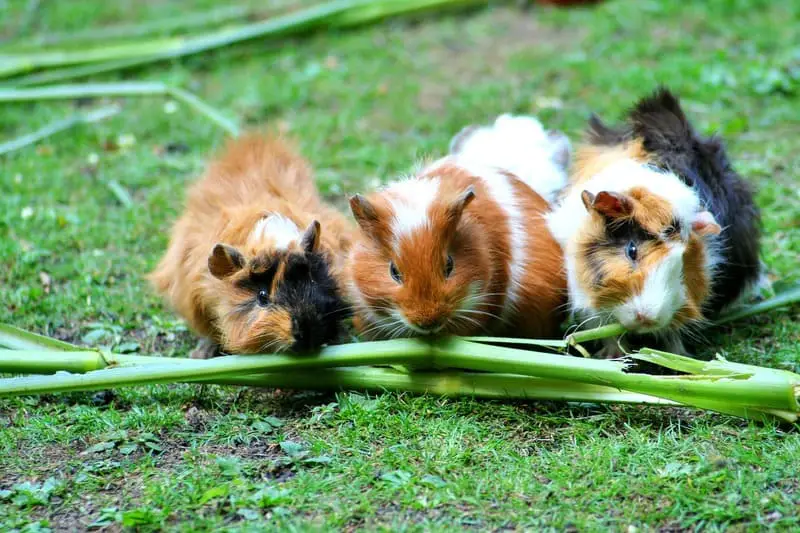
What Makes Up a Guinea Pig’s Diet?
Before delving into the specific guidelines for portion sizes, it’s important to understand what makes up a guinea pig’s diet. A balanced guinea pig diet typically consists of the following components:
1. Hay
High-quality hay is the cornerstone of a guinea pig’s diet. It provides essential fiber, aids in digestion, and helps wear down their ever-growing teeth. Hay should be available at all times for guinea pigs to graze on throughout the day. The main types of hay suitable for guinea pigs are:
- Timothy hay
- Orchard grass hay
- Meadow hay
- Bermuda grass hay
2. Fresh Vegetables
Fresh vegetables provide important vitamins and minerals that are essential for a guinea pig’s health. Guinea pigs enjoy a variety of vegetables, and these should be offered daily. Popular choices include:
- Romaine lettuce
- Bell peppers
- Carrots
- Cucumbers
- Kale
- Parsley
- Spinach (in moderation)
3. Pellets
Guinea pig pellets are formulated to meet their dietary requirements and can provide additional nutrients. However, pellets should be fed in moderation, as they are not the primary source of nutrition. Choose high-quality guinea pig pellets and follow the recommended serving size on the packaging.
4. Fresh Water
Guinea pigs require access to clean and fresh water at all times. Ensure they have a water bottle or dish that is regularly cleaned and replenished.
5. Occasional Fruits
Guinea pigs enjoy fruits as occasional treats due to their high sugar content. Offer fruits such as apples, strawberries, blueberries, melon, and pears in small quantities as an occasional snack.
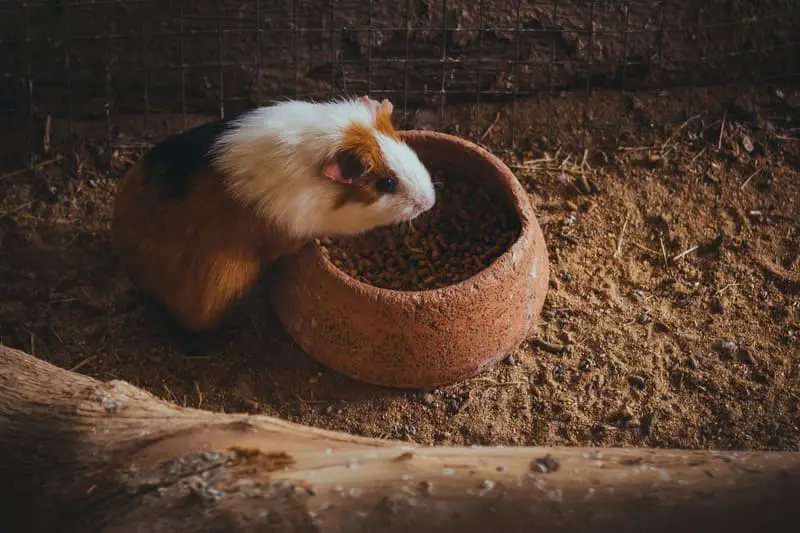
Determining the Right Portion Sizes
Guinea pigs, like all pets, have individual needs. To determine the right portion sizes for your guinea pig, consider the following guidelines:
1. Hay
Hay should be available to your guinea pig at all times. Provide a continuous supply, and ensure that it is fresh and clean. Guinea pigs will naturally regulate their hay intake, and it serves as their primary source of fiber and nutrition. It’s essential to choose a high-quality hay to meet their dietary needs.
2. Fresh Vegetables
Guinea pigs should receive a serving of fresh vegetables daily. While guinea pigs have individual preferences, a good starting point is to offer about 1 cup of fresh vegetables per guinea pig per day. Be sure to provide a variety of vegetables to ensure they receive a broad spectrum of vitamins and minerals. Monitor your guinea pig’s reaction to the vegetables and adjust the portion size as needed. If your guinea pig consumes all the vegetables within a short time, you may consider increasing the portion slightly.
3. Pellets
Pellets should be fed in moderation and serve as a supplementary part of your guinea pig’s diet. The daily portion size of pellets depends on the specific recommendations provided on the pellet packaging, as nutritional content can vary between brands. Typically, an adult guinea pig should receive approximately 1/8 to 1/4 cup of pellets per day. Pregnant or nursing guinea pigs may require slightly larger portions, but it’s crucial to consult with a veterinarian for specific guidance.
4. Occasional Fruits
Fruits should be given as treats and make up only a small part of a guinea pig’s diet. A small slice or a few pieces of fruit, such as apple, strawberries, or blueberries, can be offered once or twice a week.
It’s important to monitor your guinea pig’s weight and overall condition to ensure they are not overeating or losing weight. If you notice significant weight changes, it may be necessary to adjust portion sizes accordingly.
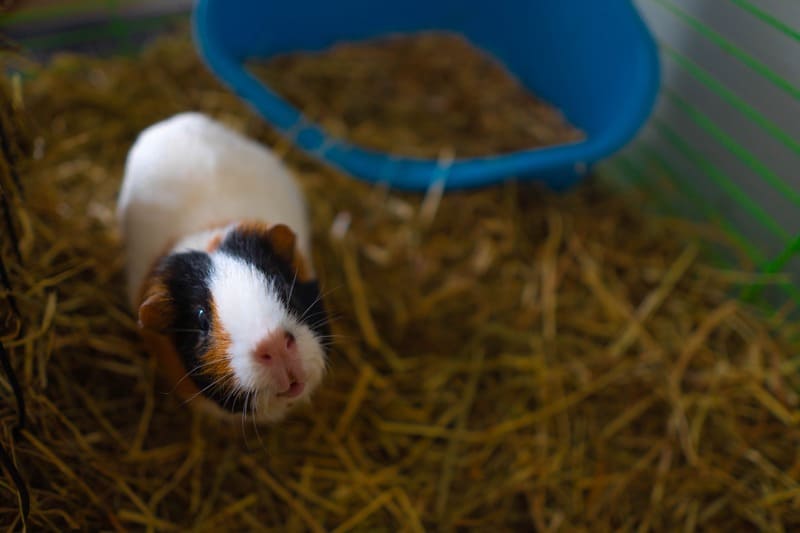
Feeding Schedule
Establishing a regular feeding schedule is beneficial for both you and your guinea pig. Guinea pigs thrive on routine, and knowing when to expect their meals can reduce stress and help them feel secure. Here is a suggested feeding schedule:
1. Hay
- Always provide fresh hay, and make sure it is accessible to your guinea pig 24/7.
2. Fresh Vegetables
- Offer a serving of fresh vegetables each day, ideally in the morning or early evening. Be consistent with the timing.
3. Pellets
- If you choose to feed pellets, provide them at the same time each day, typically in the morning or evening. Follow the recommended portion size provided on the pellet packaging.
4. Occasional Fruits
- Offer fruits as treats occasionally, perhaps once or twice a week. There is no need for a set schedule for fruit treats.
Monitoring and Adjusting Portion Sizes
It’s crucial to monitor your guinea pig’s weight and condition regularly. If you notice significant changes, it may be necessary to adjust their portion sizes. Here are some general guidelines for monitoring and adjusting portion sizes:
1. Weight Check
Weigh your guinea pig regularly using a digital kitchen scale. A healthy adult guinea pig typically weighs between 2 to 2.5 pounds (900 to 1,100 grams). Pups and young guinea pigs may weigh less, and pregnant or nursing sows may weigh more.
2. Signs of Overweight Guinea Pigs
If your guinea pig becomes overweight, you may observe signs such as difficulty moving, reduced activity, and difficulty grooming themselves. Consult with a veterinarian to determine the appropriate portion sizes to help your guinea pig lose weight gradually.
3. Signs of Underweight Guinea Pigs
If your guinea pig is underweight, they may appear frail, have visible ribs, or have a reduced appetite. Underweight guinea pigs may require slightly larger portions to promote weight gain. Consult with a veterinarian to address any underlying health issues.
4. Health Concerns
Guinea pigs with specific health conditions, such as dental issues, may have unique dietary needs. Consult with a veterinarian to develop a specialized diet plan that meets their requirements.
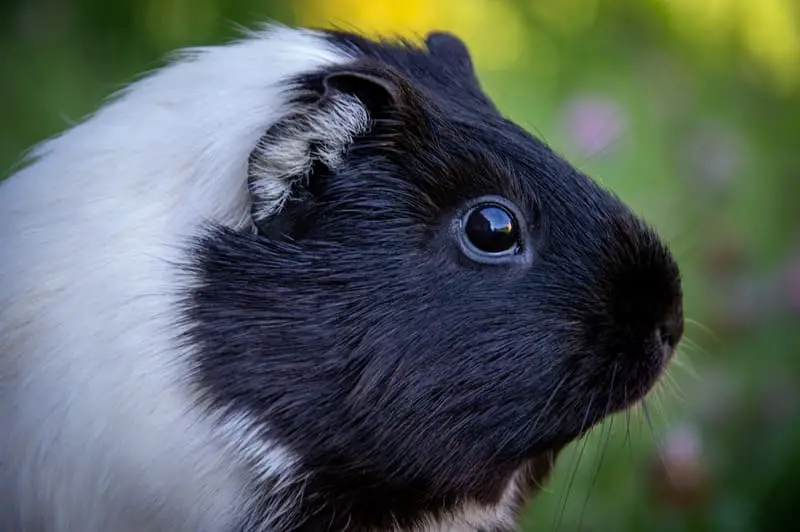
Special Considerations for Young Guinea Pigs
Young guinea pigs, or pups, have distinct nutritional needs due to their growth and development. Here are some special considerations for feeding young guinea pigs:
1. Higher Nutrient Requirements
Pups require a diet that is richer in calories, protein, and calcium to support their rapid growth. Ensure they receive higher-quality pellets designed for young guinea pigs and provide more frequent servings of fresh vegetables.
2. Additional Hay
Young guinea pigs can have a more challenging time consuming hay. Offer softer hay varieties, such as second-cut timothy hay or orchard grass hay, to make it easier for them to chew and digest. Make sure hay is always available.
3. Monitor Growth
Regularly monitor the growth of your young guinea pigs. They should steadily gain weight and exhibit healthy development. If you notice growth issues or weight loss, consult with a veterinarian to adjust their diet.
4. Calcium Moderation
While young guinea pigs require more calcium than adults, it’s essential to provide it in moderation to prevent excessive intake, which can lead to kidney issues. Choose pellets formulated for young guinea pigs to ensure the right calcium balance.
Special Considerations for Pregnant and Nursing Guinea Pigs
Pregnant and nursing guinea pigs have heightened energy and nutrient requirements to support both themselves and their offspring. Here are some special considerations for feeding pregnant and nursing guinea pigs:
1. Increased Portion Sizes
Pregnant and nursing sows require larger portions of food to meet their increased energy needs. Provide extra pellets and additional servings of fresh vegetables.
2. High-Quality Food
Ensure that pregnant and nursing guinea pigs receive the highest quality food, including fresh vegetables and pellets designed for guinea pigs. The food should be rich in nutrients to support both the mother and her pups.
3. Continuous Access to Hay
Guinea pigs need continuous access to hay, and this is especially important for pregnant and nursing sows. The fiber in hay aids digestion and supports a healthy digestive system during pregnancy and lactation.
4. Monitoring Weight
Regularly monitor the weight of pregnant and nursing guinea pigs to ensure they maintain a healthy condition. Consult with a veterinarian to adjust their diet if necessary.
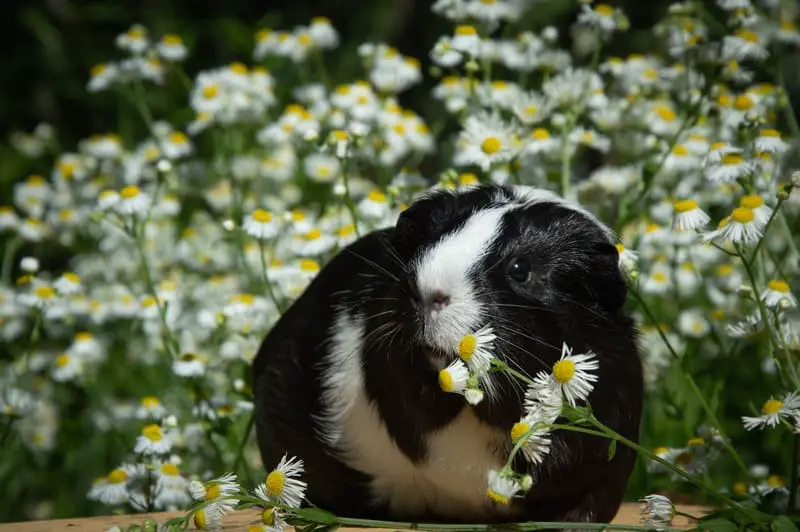
Special Considerations for Overweight Guinea Pigs
If your guinea pig is overweight, it’s important to address this issue promptly to prevent health problems. Here are some special considerations for managing overweight guinea pigs:
1. Portion Control
Reduce the portion sizes of pellets and monitor your guinea pig’s vegetable intake. Reducing the number of high-calorie treats can also help with portion control.
2. Encourage Exercise
Provide opportunities for exercise and mental stimulation. Guinea pigs benefit from physical activity, such as floor time in a safe and secure space. This can help them burn off excess calories and maintain a healthy weight.
3. Gradual Weight Loss
Weight loss should be gradual and steady to avoid health issues. Consult with a veterinarian to develop a plan for gradual weight loss that includes portion control and regular exercise.
Conclusion
Determining how much guinea pig food to give your pet is a crucial aspect of their care. Proper nutrition is vital for maintaining their health, preventing obesity, and ensuring they receive the necessary nutrients. Guinea pigs have specific dietary needs that are influenced by factors such as age, weight, activity level, and health status.
A balanced guinea pig diet includes high-quality hay, fresh vegetables, pellets (in moderation), and occasional fruit treats. It’s important to establish a feeding schedule, monitor your guinea pig’s weight, and adjust portion sizes as needed. Special considerations apply to young guinea pigs, pregnant and nursing sows, and overweight guinea pigs, and consulting with a veterinarian can help address specific dietary requirements.
By providing your guinea pig with the right amount of food and maintaining a balanced diet, you can ensure they lead a healthy and happy life. Guinea pigs are wonderful companions, and responsible feeding practices are key to their well-being and longevity.
